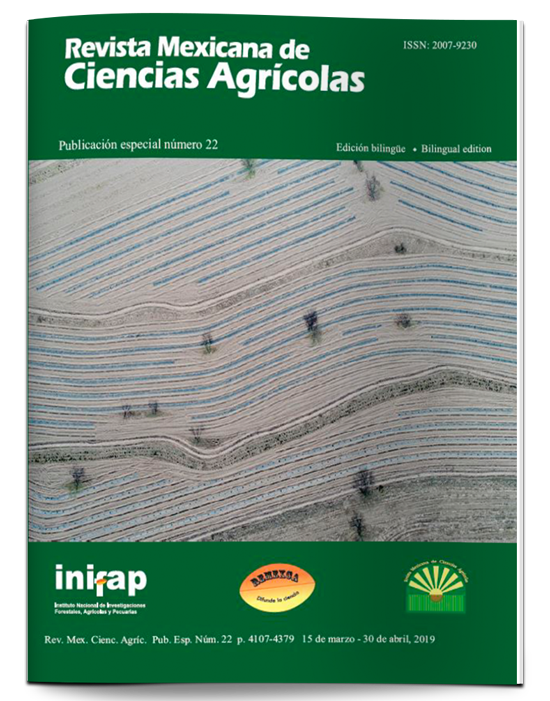A rainfed agroforestry system for the semi-arid Altiplano of Mexico
DOI:
https://doi.org/10.29312/remexca.v0i22.1861Keywords:
Opuntia sp., Leucocephala glauca, agroecosystem, aqueel, live barrier, poolingAbstract
In the semi-arid Altiplano of North-Central Mexico, soil erosion is one of the main problems affecting the sustainability of agricultural lands. As a result, yields and incomes are low and soil quality continues to decline. With the objective of developing an agroforestry exploitation system for the sustainable management of soils, a rainfed agroforestry system (SAF) was designed that included sorghum (Sorghum bicolor L. Moench) of brown rib (bmr) and beans (Phaseolus vulgaris L.) in rotation, nopal (Opuntia sp.) and leucaena (Leucocephala glauca) as an alternative to improved management of the agricultural production units, and not as another variant of the productive reconversion. The SAF was evaluated in the Experimental Site ‘Sandovales’, Aguascalientes, during 2014 and 2015, under restrictive environmental conditions, with 344 and 320 mm of precipitation in the cultivation cycles to prove that it is sustainable, since it favors the conservation and fertility of the soil and the use of rainwater. The average yield of sorghum planted in bed with six rows was 6.33 t ha-1 of MS, that of the bean of the varieties Flor de Junio Dalia, Pinto Saltillo, Pinto Centenario, Flor de Mayo Dolores and Azufrado 2, in four rows was 2.03, 1.80, 1.74, 1.34 and 0.60 t ha-1 grain. It is concluded that it is possible to implement a SAF of sustainable productivity, where sorghum and rainfed beans are included in a crop rotation. The proposed SAF offers technically efficient options for erosion control in rainfed agriculture, with low productivity.
Downloads
Downloads
Published
How to Cite
Issue
Section
License
The authors who publish in Revista Mexicana de Ciencias Agrícolas accept the following conditions:
In accordance with copyright laws, Revista Mexicana de Ciencias Agrícolas recognizes and respects the authors’ moral right and ownership of property rights which will be transferred to the journal for dissemination in open access. Invariably, all the authors have to sign a letter of transfer of property rights and of originality of the article to Instituto Nacional de Investigaciones Forestales, Agrícolas y Pecuarias (INIFAP) [National Institute of Forestry, Agricultural and Livestock Research]. The author(s) must pay a fee for the reception of articles before proceeding to editorial review.
All the texts published by Revista Mexicana de Ciencias Agrícolas —with no exception— are distributed under a Creative Commons License Attribution-NonCommercial 4.0 International (CC BY-NC 4.0), which allows third parties to use the publication as long as the work’s authorship and its first publication in this journal are mentioned.
The author(s) can enter into independent and additional contractual agreements for the nonexclusive distribution of the version of the article published in Revista Mexicana de Ciencias Agrícolas (for example include it into an institutional repository or publish it in a book) as long as it is clearly and explicitly indicated that the work was published for the first time in Revista Mexicana de Ciencias Agrícolas.
For all the above, the authors shall send the Letter-transfer of Property Rights for the first publication duly filled in and signed by the author(s). This form must be sent as a PDF file to: revista_atm@yahoo.com.mx; cienciasagricola@inifap.gob.mx; remexca2017@gmail.
This work is licensed under a Creative Commons Attribution-Noncommercial 4.0 International license.



